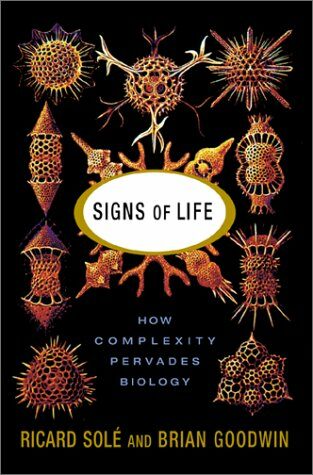Richard Sole and Brian Goodwin compiled a book detailing the applications and seemingly inescapable presence of complex systems in the biological sciences in their pioneering book Signs of Life: How Complexity Pervades Biology. Now let me begin by saying that this is not light reading and probably not for everyone. That is not to say you need a science background to understand this book. The authors did a wonderful job of separating the technical science and math from the main themes of the book and use a multitude of pictures, diagrams, graphs, charts, and figures to detail their thesis.

Signs of Life
Scientists have long reconstructed systems and analyzed their individual parts to understand how they fit together with regards to the whole. It has worked wonderfully for some time. However, now scientists are realizing that in nearly every field of biology from cellular and molecular biology to ecology and physiology that analyzing the parts of the whole simply does not yield predictable behavior. Why do certain stem cells become skin cells and others become neurons if they have the same genome? Why do some creatures seem to hold up an entire ecosystem if only a small percentage of animals actually eat these species? Sole and Goodwin begin by explaining how nonlinear interactions between individuals form complex systems. This understanding of complex systems and the emergent behavior, that is, behavior that cannot be performed by individual units but can be performed by the system as a whole, can offer us novel ways of approaching these deep problems of biology. Sole and Goodwin show us how issues once considered inexplicable, are now being unraveled and explained with complex systems biology.
Grade: A-
No comments:
Post a Comment